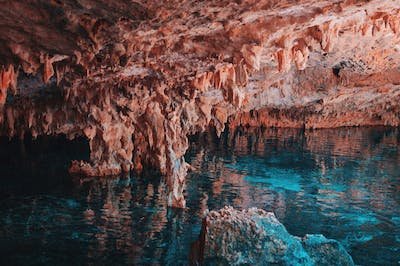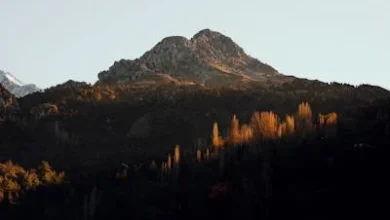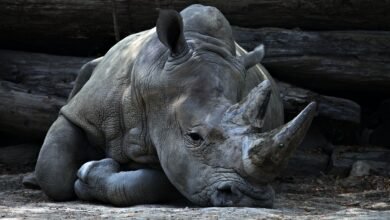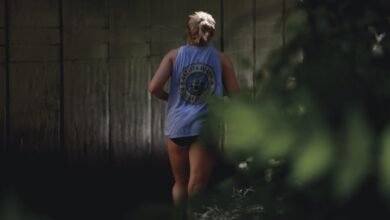Guide to Backpacking To An Unforgettable Of Trip Reflection Canyon

It is a genuinely life-changing experience to backpack through Reflection Canyon’s breathtaking scenery. This undiscovered jewel, tucked away in the center of Glen Canyon National Recreation Area, provides breath-taking vistas of the tall red rock cliffs, glistening streams, and a sense of seclusion that comes only from being in the far-off wilderness.
Havasupai, the Wave, and Reflection Canyon have long been on my list of must-see locations in the Southwest United States. I had a fantasy of backpacking there to witness the famous S-curve of sandstone rock formations in the canyon at dusk and daybreak.
I cover every detail of our guided backpacking trip to Reflection Canyon with Dreamland Safari in this guide, including route details, key logistics, photography advice, and our packing list!
What is Reflection Canyon?
Secluded and breathtakingly beautiful, Reflection Canyon is a part of Lake Powell in Utah, USA’s Glen Canyon National Recreation Area. It is well-known for its striking and complex Navajo sandstone formations, the famous S-curve, and its mesmerizing dawns and dusks.
In the strict meaning of the word, Reflection Canyon is not a canyon in and of itself. Instead, it’s a wavy, serpentine arc of Lake Powell’s Escalante arm that winds through and between massive sandstone outcrops.
Reflection Canyon is not a frequently visited place because of its remote location and challenging access, but its breathtaking natural beauty has made it more well-known recently. National Geographic initially revealed its location to the public in 1996.
Reflection Canyon is where?

Southeastern Utah’s Glen Canyon National Recreation Area is home to Reflection Canyon. It is located specifically on the northeastern shore of Lake Powell, a sizable reservoir created by the Colorado River’s Glen Canyon Dam. The canyon is a really difficult place to get to because it is tucked away in the untamed and isolated desert terrain of southern Utah.
Where in the Reflection Canyon Should Anyone Stay Before and After Visiting?
The nearest base to the Reflection Canyon trailhead is the Utah town of Escalante. During our trips to southern Utah, we have stayed at Escalante a few times—at Canyon Country Lodge and Escalante Yurts. Both were excellent experiences, and the yurts are a stylish and unique way to go camping.
When Is Reflection Canyon the Best Place to Visit?
The ideal times of year to visit Reflection Canyon are Where is Reflection Canyon Anyway: in the spring and fall. The days are warmer, with highs of 70 degrees Fahrenheit and lows of 40 to 50 degrees. It may be dangerously hot in the summer and extremely frigid in the winter to travel through the desert.
We believed that late October was the ideal time to explore Reflection Canyon when we were there. The moon and sun rose over the vista with perfect centering, and the weather was lovely. In addition, the almost full moon created wonderful twilight lighting.
Hiking Reflection Canyon on Foot
Since we believe that backpacking Reflection Canyon is THE greatest way to experience it, we’ve devoted the next section of this post to covering all the necessary preparations for a backpacking trip in Reflection Canyon.
Reflection Canyon Backpacking Benefits Using a Guide
It took us a long time to finally visit Reflection Canyon Where is Reflection Canyon Anyway: because we were inexperienced trekkers and there were no guided choices available until lately. We had wanted to go there for years. We believed that having a guide would be helpful in two areas: navigating our way around and getting to water in the desert. We got in touch with Dreamland Safari right away to set up our vacation when they revealed they will be doing hiking excursions via Reflection Canyon in 2023.
We decided to hike Reflection Canyon with a guide because of a few factors, including:
Wayfinding: Only well-worn, social pathways from years of use go to Reflection Canyon; there is no official trailhead. For the first five kilometres of the trek, the major social trail is very easy to follow; however, there is no track visible when you reach the section of the climb on slippery rock. For the remainder of the trip, hikers must use landmarks and GPS to find their way toward Reflection Canyon.
Water Access: Since Reflection Canyon does not have easy Where is Reflection Canyon Anyway:access to water, most trekkers will need to bring enough water for the whole overnight journey. Leaving out the water used for cooking,
Vehicle: Hole-in-the-Rock route is a rugged 40-mile dirt route; an AWD vehicle is advised. Let the Dreamland automobiles take the abuse and save your own car!
Meals: Breakfasts, lunches, and dinners were all handled by the Dreamland crew, so our only task was to organize and carry the snacks.
First Aid: In addition to the typical hiking dangers like falling, trekking in the desert has a number of safety risks, such as dehydration, sunstroke, and rattlesnakes. All Dreamland guides (many of them are on the Search and Rescue squad in Kanab) are trained in first aid.
Route Information for Reflection Canyon Trail
Before you reach the sandy dirt social route from the trailhead, you’ll have to cross a short hill of slippery rock. From here, you should be able to see the trail’s location with ease. The route is mainly level, with a few small hills and valleys across several washes. There’s a cow water trough at about the 2-mile mark. There is authorized cattle grazing on Bureau of Land Management land along the Reflection Canyon route.
As you trek, stay to the right of the cliffs. You’ll eventually reach an open section where the terrain changes to slippery rock, about mile 6. To make sure you stay on course at this point, you should have your phone’s GPS and map close at hand. If you just follow the AllTrails lines—which we found to be typically accurate—you will arrive at your destination.
Where in Reflection Canyon to Camp?
Reflection Canyon offers a wide range of camping alternatives. There’s a big wide space ahead of you before you reach the sight itself. This is where we spent the night as a group. The general location of our campsite is depicted on the map below. This location was fantastic because of its roominess and the windbreak provided by the hill.
Taking pictures in Reflection Canyon
Reflection Canyon is popular among hikers who come to capture its sunrise and sunset views. The following advice can help you get the shot:
The Golden Hours Are Crucial: The ideal times of day to take pictures of the canyon reflections are at sunrise and sunset. The colours are enhanced and a mystical aura is created by the warm, gentle light.
Employ a Sturdy Tripod: Sharp, long-exposure photographs require a solid tripod due to the low light levels at dawn and dusk. Accurate framing and composition are also possible.
Lens with a wide angle for landscapes: It is best to use a wide-angle lens (around 16–35mm) to capture Reflection Canyon’s immense splendour. Including as much of the scenery as you can is beneficial.
Conclusion:
As we conclude our guide to backpacking to Reflection Canyon, Where is Reflection Canyon Anyway: the attraction of this herbal marvel is undeniable. Navigating the adventure requires coaching, respect for the environment, and a feel of journey. From the awe-inspiring reflections within the water to the rugged beauty of the surrounding panorama, Reflection Canyon gives a honestly unforgettable enjoyment for the ones willing to venture off the overwhelmed direction. Embrace the task, take pleasure in the moments, and create memories a good way to remain a life-time within the captivating include of Reflection Canyon.



